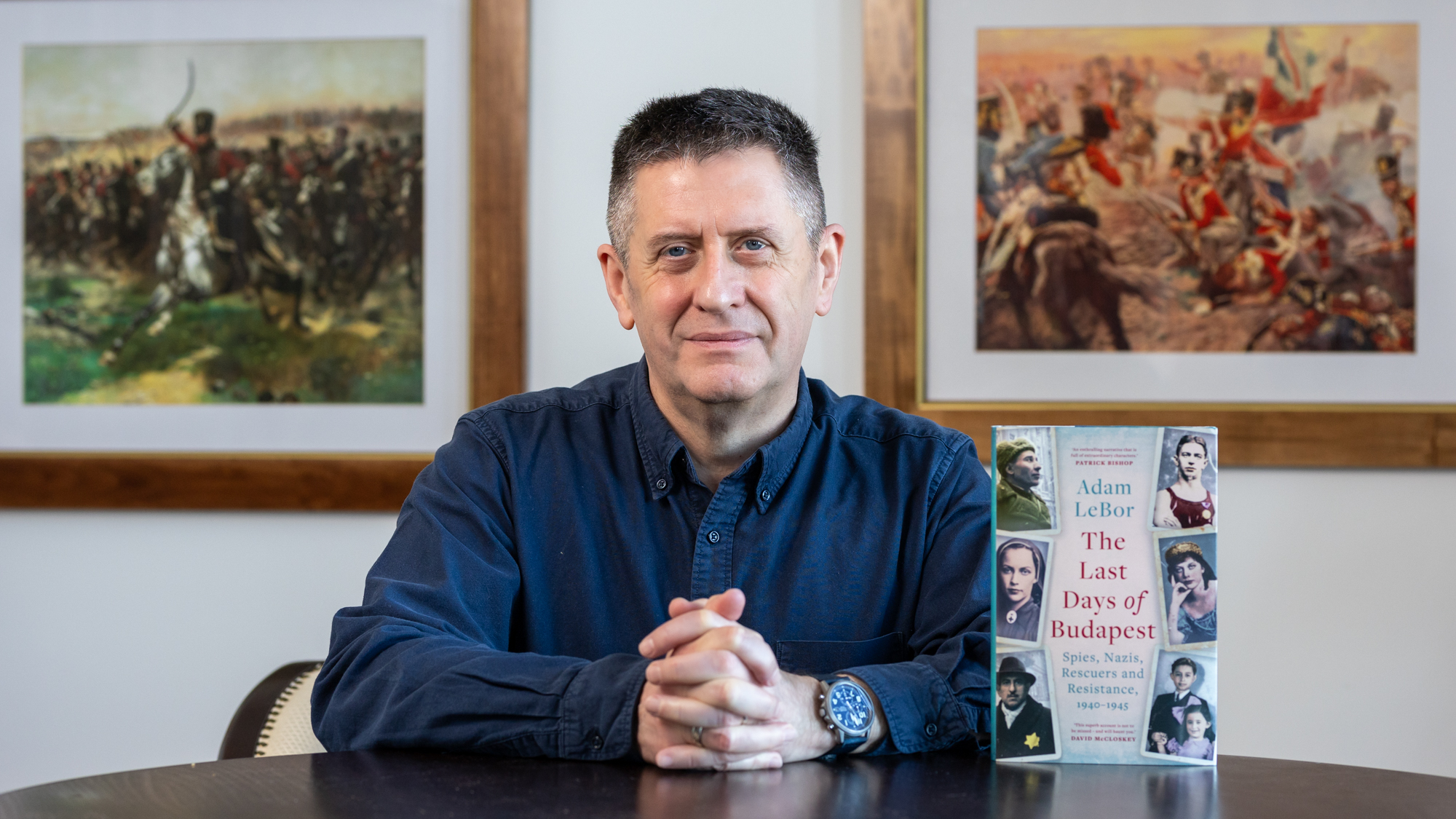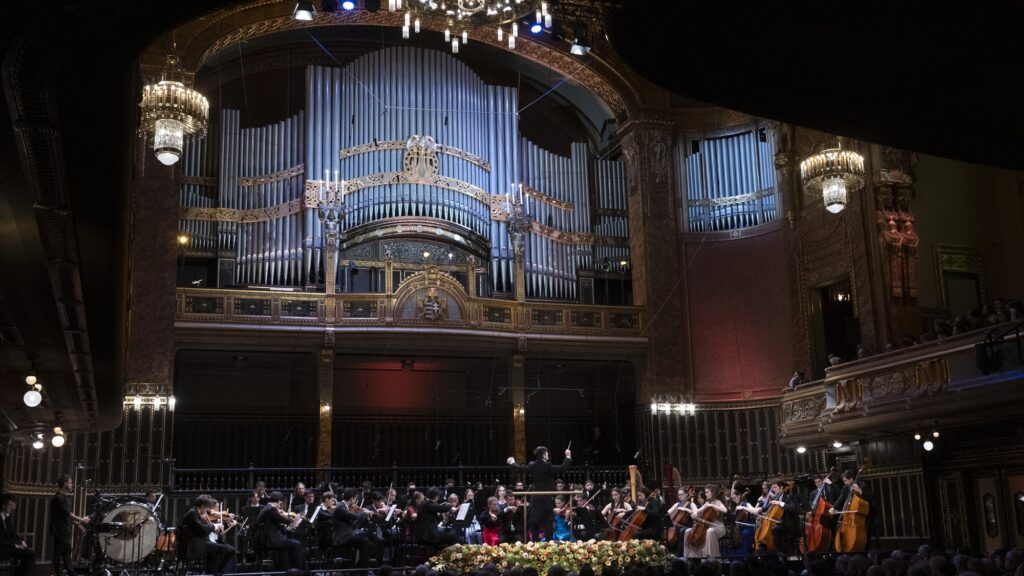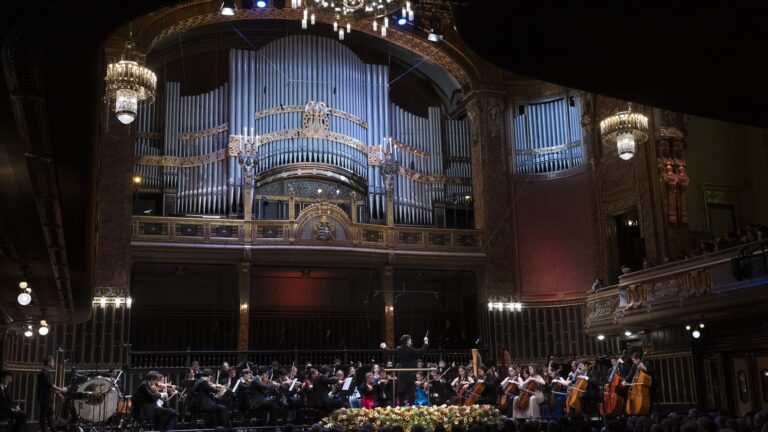I do read history, but I’ve never thought I could thoroughly enjoy it. Then I read Adam LeBor’s new book, The Last Days of Budapest—Spies, Nazis, Rescuers and Resistance 1940–1945. And I wholeheartedly agree with its reviewer in The Times saying, ‘I am in awe’. So, we sat down with the British author-journalist, a former war correspondent for The Times and The Independent and a fervent admirer of our capital, to talk about the first English-language, non-fiction account of Budapest throughout the Second World War.
***
We are talking in the Buda Castle, where 80 years ago, German and Soviet troops were fighting, people were dying. It’s quite unimaginable.
It’s incredible, isn’t it? Exactly on these streets, they were fighting room by room.
That’s one of the reasons why I think your book is stunning. You managed to tell the story of the siege of Budapest in a way that we can feel ourselves in the middle of the unfolding events.
There are two ways to write history: the top-down or the bottom-up. The former is writing about the statesmen and the governments and the diplomacy, saying that they decided to do this, and they decided to do that. The latter is to tell how it was experienced by people. So, the book is mostly the bottom-up way. I try to tell the story of Budapest through the lives and deaths of the people who lived and died in the city. Of course, you need a bit of top-down stuff as well. What was Admiral Horthy thinking? What decision did he take? What were the Germans doing? What were the Russians doing? You need a bit of that. But to bring it alive, you try to tell the story the bottom-up way. You need people because people understand people.
‘I try to tell the story of Budapest through the lives and deaths of the people who lived and died in the city’
For many people in Britain, this is completely new. You know, the Second World War is very much encoded into our cultural identity, especially for my generation. But most British people don’t know much about Hungary. I was a foreign correspondent here for many years, but I also learned so many amazing things. I mean, who knew that Britain had an embassy in Budapest until April 1941, even though Hungary was a member of the Axis? Okay, it wasn’t actively fighting in the war then, but in November 1940, it still signed up with Japan and Italy and Nazi Germany. And yet we still had an ambassador here who had free access to Admiral Horthy and Prime Minister Teleki and would go and see them whenever he wanted. This is amazing. There is also the Polish rescue story, which Klára Andrássy, later Kaja Odescalchi, organized from just a five minutes’ walk away from here. The Andrássy Palace was the centre of the Polish resistance, which carried on throughout the war until the Germans invaded. So, this ambiguity fascinated me. Hungary was a member of the Axis and allied with the Nazis, and after the summer of 1941, was fighting with the Germans at terrible cost. But at the same time, it was still waving to London and Washington, saying: ‘Actually, we’d really rather be with you, but we just can’t really organize that’.
So, you decided to tell unique stories. As The Times’ review emphasized: ‘What results is a pointillist painting: tiny dots of experience drawn together into a great canvas of war.’ How did you come up with this structure? How did you choose your heroes, heroines?
Well, it was a challenge. And there were times when I felt completely overloaded, that I had so much going on and so many stories. And then I realized what to do—because I’ve written a book with a similar approach, called City of Oranges about Jaffa. It tells the story of six families in Jaffa, three Jewish and three Palestinian. I used them to tell the story of the Israeli–Palestinian conflict. So basically, I just wrote out every story. I picked a character—for example, Klára Andrássy or my late father-in-law, Róbert Ligeti—and just wrote out their story. Then, I had the key dates. Then, I wrote out the next one. And then I did it date by date: what was happening in spring 1941? What happened in 1942? Therefore, some chapters cover a shorter time—in 1942 and 1943—and the main story is about diplomacy in trying to change sides. But in 1944, after the Germans invaded, there were many, many stories going on and many characters. There was Hansi Brand, the Jewish lady who negotiated with Eichmann; I had a detailed account of what she was doing on this month, on that month and so on and so forth. Afterwards, you put them all together and start to weave them together. It took a fair bit of planning and research to work out what I wanted to do. Afterwards, I wrote a lot of the book in a few months. Suddenly, it caught fire and I just kept writing. At the end of it, I sort of had to go to bed for a day or two to recover.
I can imagine it overwhelming you…
I mean, I was completely hyped; I was totally locked on target; it consumed me.
How did you manage not to get depressed by everything that happened in those years, especially after 1944, when the story becomes pretty horrific with the deportations and the ghetto? It’s hard to process, even reading it.
As a writer, it’s quite hard to deal with it. But you think: ‘I am writing this book; I have to tell this story.’ So, sometimes you put it down and go for a walk, or you go to the gym or do something else to clear your head. Because you can get overwhelmed with it. I didn’t want to overload it, you know. I mean, there were worse things that I didn’t put in. Some of the things I was reading about, such as what the Arrow Cross was doing, were mind-boggling. The cruelty, the savagery of it. It was just unbelievable. And that is coming from someone who’s written about the Bosnian War and the Holocaust before, but this… I’ve never read anything like this. What they did is just unbelievable. And at that stage in the war, it was all over. The Russians were literally two or three hundred yards away. And they were still killing, with great savagery. That’s absolutely horrible.
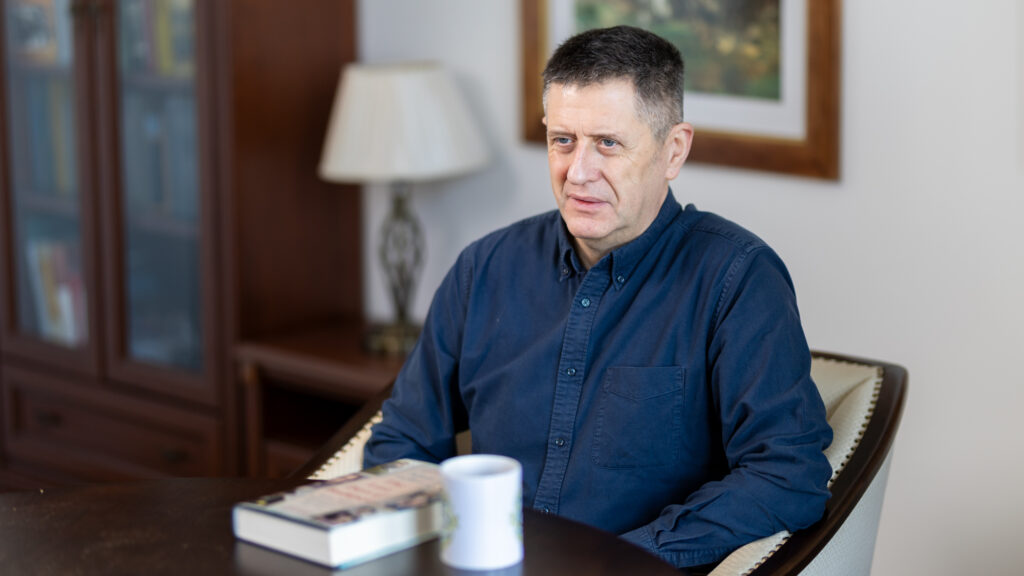
What inspired you to write such a book? You already treated wartime Budapest in your first novel. Why write a work of non-fiction about it too?
It’s been a long process. You’re right. In my first book, The Budapest Protocol, the hero—strangely enough—is an English foreign correspondent in Budapest, and even his first name begins with A. Imagine that… But it was based on an actual document that I found when I was researching a book—called Hitler’s Secret Bankers—about the Nazi plan for post-war domination of Europe, based on a meeting in a hotel in Strasbourg in 1944. So, I just moved that meeting to the Astoria Hotel. The novel opens in the ghetto in the winter of 1944 and then jumps to the present day. I think writing that made me realize that no one’s told or at least tried to tell the story of wartime Budapest in one book. Also, I got so much from this country: a career, family, a new life really. So, if I can contribute something back with my book, then I’d be very happy. That’s why it’s primarily written for people in Britain, America, and Western Europe who know nothing about wartime Budapest.
Really?
There’s very little knowledge about what happened. I think most people haven’t had any idea. They know that the Holocaust happened here, that the Jews of the countryside were deported, they perhaps know that there’s still a significant Jewish community in Budapest and that half the Jews of Budapest survived. And they know about the siege of Stalingrad, the siege of Leningrad, and what happened in Berlin, but nothing of the siege of Budapest. That there was absolutely savage fighting in Budapest, that the population was living in the cellars and starving and eating bits of frozen horse meat. Now, I know, of course, that many Hungarian historians have written books about the war and that Krisztián Ungváry has written a very good book about the siege, but I wanted to try and tell the whole story of the city in the war from before 1939 to 1945. You know, sometimes, you’re sitting on something and you don’t even recognize it. And I was thinking, it’s just so obvious that it is what I have to do next—because no one’s done it, and I can do it.
Could we say that it’s also a tribute to your late father-in-law?
Yes. Partly, it is. I mean, I was listening to his stories of how he escaped the children’s home in the Városligeti Fasor when the Arrow Cross raided and from the Óbuda brickworks. I thought we had to get these stories written down. And I was sure there were many other people in the city still with similar stories, but I couldn’t do it all. However, this I can tell.
You start with the picturesque opening scene of the coronation of Charles IV in 1916. Why go back so much in time?
It’s a good question. Originally, the idea was to write a book from the summer of 44 to the spring of 45. But then I realized that it’s impossible to do this, especially for a Western audience, because you have to explain so much, and you have to keep doing so much backstory for them to understand everything, that it just didn’t work as a narrative. So, I doubled my workload. I said to the publishers: ‘Okay, I’ve got to do the whole war.’ They said: ‘All right, you’re the writer, if that’s what you have to do, do it.’ And they got a bigger, better book, for the same contract. Then I realized that even if I started in 1939, I’d still have to say who Admiral Horthy was, what the forces that shaped Hungarian society were, who Béla Kun was, and what the White Terror was. Consequently, I decided to start in 1916. I thought this was a great moment in the middle of the war and the coronation of King Charles. And then I found this amazing account of it by Katinka Károlyi, and she had such an eye. She was saying that the crown was slipping from his head, and he couldn’t hold the orb properly; so everything was there as the empire was crumbling. And I thought, let’s start there and just go quite fast to 1939. I also realized after a while that a lot of what happened here in 1944 was rooted in the White Terror and in what happened after the First World War. It was a completely unresolved, well, trauma is one word, but also unresolved justice. These people, like Emil Kovarcz and Pál Prónay, the killers of the White Terror, never faced justice, and in 1944, when the Arrow Cross took power, they could start killing again.
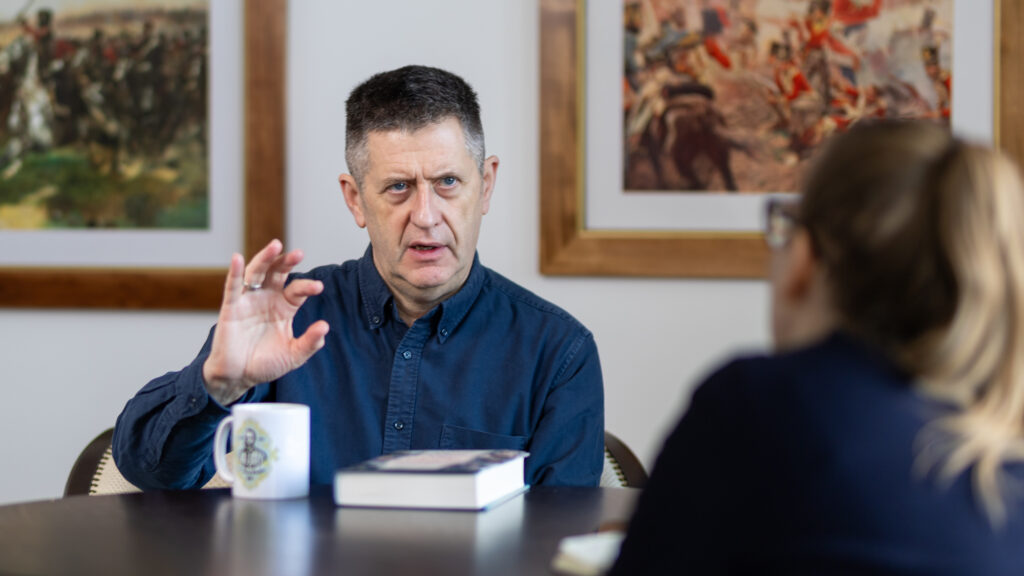
You also mention—and I think it’s really important—that one of the reasons why Hungary sided with Hitler was the promise to get back what was taken by the treaty of Trianon in 1920.
Trianon was an absolute, horrific injustice, there’s no question of that. I mean, look at the numbers: Germany, who started the war, lost 15 per cent of their lands, and Hungary lost two-thirds. Maybe you could say that Fiume (today Rijeka) is not historic Hungarian land, but a lot of what was lost is. A lot of the heartland was cut out and a lot of Hungarians were stranded. You know, they were Hungarians, then suddenly they were citizens of another country. It’s very interesting to read some of the accounts of that: suddenly, they’re Romanians or Serbians, but the bureaucracy doesn’t work in Hungarian. And they don’t speak Romanian or Serbian, why would they? So, they’re completely stranded. It’s a huge trauma. It was a savage punishment, but the steps that were taken to try and fix it led to a complete disaster. I think a key moment, which is not actually written about that much, was in September 1943, when the diplomat László Veress was in this almost surreal situation on the boat of the British Ambassador outside Istanbul, negotiating the terms for changing sides. And everything was agreed. It was all agreed upon, but Horthy couldn’t do it.
Why? What do you think?
Well, it’s easy to be clever with hindsight. Partly—I would say—because of his own misguided sense of honour. He felt he had entered into an alliance with Germany and so was bound by that. I suppose another reason he couldn’t do it was that he thought the Germans would invade—but the Germans were going to invade anyway. They were coming because the Jews were still here, still alive, and the Germans were losing the war. Hungary had enormous resources, it controlled the Danube, it had food supplies, it had men, it had everything, you know. The Germans wanted all that, and they took it by force. If you read the accounts, the diary, for example, of Dr Mária Mádi—it’s one of the big sources in here—a very brave Christian lady who saved her Jewish neighbours, she’s saying in the summer of 1944 that the Germans are buying everything, the shops are empty, nobody likes them; ‘We can’t get shoes, we can’t get coffee, we can’t get tobacco’, they take everything. But If Hungary had changed sides in 1943, probably the post-war settlement would have been different, more generous. And everything was prepared for that to happen. Hungary was far more Western in its orientation than Romania, which did change sides. I mean that at the time, the Hungarian aristocracy was Anglophile. Horthy was an Anglophile. The country was an authoritarian managed democracy, less free in 1943 than in 1933, and the anti-Jewish laws had been passed, but apart from the Jewish men on labour service, hundreds of thousands of Jews were still alive, and the country was not a Fascist dictatorship. Hungary existed as a unitary state. Czechoslovakia didn’t exist. Poland didn’t exist. It was one of Horthy’s achievements that he kept Hungary in existence for 24 years when all around these new states were collapsing. So, I think if Horthy had changed sides, the country would have followed him.
What did you find in your research about this matter?
One of the most interesting sources I had was the memoir of Horthy’s daughter-in-law, Ilona Edelsheim-Gyulai. She writes in very great detail about what happened on the morning of 15 October 1944, when Admiral Horthy finally tried to change sides. She was an anti-Nazi and an ally of the Jewish community. Her point of view, of course, is sympathetic to Horthy. She calls him Miklós Papa. And even she’s writing: ‘Why are we waiting’, ‘why doesn’t he just do it?’—when on October 15 Horthy was waiting for two or three hours, until the German Ambassador Veesenmayer arrived, to tell him that Hungary was changing sides now—instead of setting the Hungarian army into action against the Nazis. Horthy was a man so out of time, with the values of another era, of the 19th century. But even Ilona says: ‘With the Nazis, you don’t behave like this. We don’t have to keep our word with villains.’ There’s another interesting source I had, from a man called Wilhelm Höttl, who was a Nazi intelligence chief in Central Europe. His memoir agreed with Ilona that if the Hungarians had moved more decisively on 15 October, they might have stopped the Arrow Cross. For those few hours that morning when literally the fate of the country was decided, Horthy was sitting around waiting. Meanwhile, the Germans were out taking control of everything, arresting everybody. It was a catastrophe. And then the real nightmare started.
I’d also like to talk about the different representations of WWII in the previously Allied countries and in our region. Especially when you think about its adaptations in recent years with films, novels and acclaimed television series, for example, Masters of the Air or SAS Rogue Heroes…
I was going to say Masters of the Air. It came out literally just last year, and it’s a great series. And you’re right. I mean, a lot of them got killed because a lot of those planes were shot down. But it’s essentially a story of victory. It is painful because of the losses. Nevertheless, it’s still a feel-good story. The same is true for Britain, as depicted by SAS Rogue Heroes. Those were absolutely emblematic British heroes who were just behind the lines killing all the Germans. But it’s much easier to be a victor. Okay, the victory comes at an incredible price, but you have the moral authority. You know, it’s great to win. But when you lose a war, and terrible things happen—more than half a million Jews were sent to their deaths or killed by the Hungarian state, hundreds of thousands of Hungarians died or were captured on the eastern front or were killed in the siege—, even if you were occupied by the Nazis, a country needs to face up to its past. It’s not easy to do that, and it comes at a price.
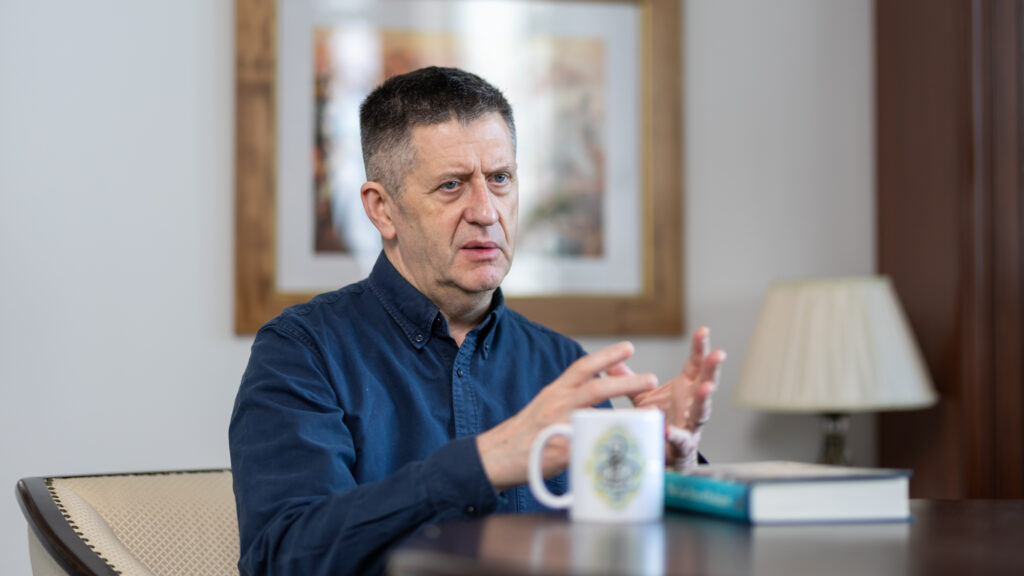
So, at the end of the day, all we are left with is being on the wrong side of history, without any heroes whatsoever?
No, you do have heroes. Klára Andrássy, later Caja Odescalchi, is an absolute heroine. István Horthy, the son of the Regent, who was killed in an aeroplane crash, could have taken Hungary in another direction, which may be why he died in a plane crash. There are also other heroic characters in my book, such as the doctor Maria Mádi, who hid her Jewish neighbours, Erzsébet Szapáry or József Antall. His son, also called József Antall, was Hungary’s first prime minister after Communism. Antall senior was a hero who did great work at great risk and was imprisoned for a long time under very dangerous circumstances and was lucky to survive.
You also wrote at length about the Hungarian and Polish resistance. It is even highlighted on the cover in the subtitle. I found it really interesting because we don’t know much about it. We know the French ‘résistance’ and the Italian partisans, but nothing about our own.
The subtitle: ‘Spies, Nazis, Rescuers and Resistance 1940–1945’ is very important. Each word there is chosen to indicate part of the narrative. Spies—I write in the book that Budapest was the Casablanca of Central Europe. In the early 1940s, Budapest was full of every kind of spy. British spies, German spies, and the Zionist movement had a lot of agents here who were going backwards and forwards to Turkey, in and out of Romania. It was an absolute espionage centre. And people like to read about spies. We have the rescuers that are well-known: Raoul Wallenberg and Carl Lutz, the Swiss Consul and Giorgio Perlasca, the Italian former fascist who declared himself Spanish Consul and saved thousands of Jews. But resistance is a key word. There were several networks: Caja Odescalchi and her Polish rescue operation, which was run with the British Legation and the knowledge of the Hungarian government from the Andrássy Palace by the Chain Bridge. There was a small Hungarian resistance movement after 1944, including her son, Pál. I wanted to pay tribute to that as well. There were also small military and Communist resistance movements with people like László Rajk. My research assistant, Kristina Fenyő, was digging out memoirs for me and going into the archives, and she found lots of old books. You know, there’s lots of stuff out there that no one knows about. There was the Jewish and Zionist resistance movement. That operated on two levels. There was the Vaada, the Aid and Rescue Committee, which negotiated with the Nazis: Ottó Komoly, Joel and Hansi Brand and Rezső Kasztner and others. And there were the youth movements and people like David Gur, born Endre Grósz, who were forging documents. David is still alive; he lives in Israel, where I interviewed him. The young Zionists were forging papers, safe passes from Switzerland and Sweden, running safe houses or smuggling thousands of people into Romania. Occasionally they did armed actions against the Arrow Cross, but it wasn’t mainly about force. It was more low-key than in Poland, but it was highly organized and extensive. I was very pleased to tell that story. Furthermore, until April 1941, there was a big British SOE (Special Operations Executive) operation here, run by a man called Basil Davidson. Britain had two wartime intelligence services, the Secret Intelligence Service, which was classic spying and the SOE, which did the things behind the lines: dropping parachutists into France, working with the resistance, and blowing things up. The Budapest SOE station ran a lot of sabotage and intelligence-gathering missions in and out of Poland.
In Hungary, it wasn’t about armed resistance. It was mostly about changing people’s opinions. They had a newspaper called Külföldi Hírek that a lot of government departments subscribed to. It was a kind of psychological warfare about getting the British opinion out there among the decision-makers. There was a bit of sabotage going on: there was a part of SOE—section D—which was trying to blow things up. But their operatives weren’t very efficient; they mostly got arrested. Anyway, there wasn’t a huge amount of enthusiasm among Hungarians to blow up their own country. Especially before the Germans had even arrived. It was a bit of a waste of time trying to organize armed resistance when the country hadn’t been invaded. Going back to the point, I started my research in the British National Archives, and to my slight amazement, I found a huge amount of stuff about the SOE operation in Hungary. Somebody should write a book on that. It’s really interesting, and I spent too long on it. I got hundreds of pages of all these failed operations until I realized I had to move on. I thought: ‘I’m six months into this book, and I’m only in 1940, so I need to move on from SOE.’ But it continued very interestingly. After 1941, they all relocated to Cairo and then to Istanbul, and they kept sending in these couriers from Istanbul through the war. They got arrested one after another, so the Hungarian counterintelligence and the Germans were pretty good.
Why don’t we Hungarians know all these stories better?
Well, as an outsider, I think one reason is communism. From when the Russians arrived in 1945 and imposed the Communist dictatorship for decades, there wasn’t much room for competing narratives. The party line did not include any kind of honest discussion. When you have a society that for 40–45 years was told that this is what happened, especially if you’re a historian in the 1950s or 1960s, you’re not going to start saying the opposite, that the party narrative is incorrect. You don’t want to end up in the cellars of Andrássy Street or, later on, simply lose your job. By the 80s, there was much more discussion, there was more liberalization. I’ve been writing about Hungary for more than 30 years on and off, and I have seen a big change in the way that the Second World War and the Holocaust are dealt with. In the early 90s, it was very much that ‘the Germans did it’. However, now, government officials say very clearly that it was our catastrophic failure that we did not protect our Jewish citizens. A new generation of younger Hungarian historians are writing very clearly about the role of the Hungarian state in the Holocaust. Last year, on Holocaust Memorial Day, the Jewish prayer for the dead, the Kaddish, was said in Parliament. In the same parliament that decades earlier passed the anti-Jewish laws. So, there’s definitely an ongoing conversation here, a fascinating debate, because there is still also a lot of sympathy for the Horthy-era, but it’s going in the right direction overall, I think. Let me add that we do not yet have a Hungarian publisher, but I very much hope the book will be published in Hungarian.
On another note: you quote a lot from Gyula Krúdy in the book. Is he your favourite Hungarian author?
I really like him, yes. He’s an incredible writer. What sentences he writes! It’s just amazing. He’s a novelist, a prose writer and everything, but an absolute poet. He’s one of my favourites. The book opens with a sentence of his: ‘Autumn and Buda were born of the same mother’, which is so true—and also Pest.
Who else?
Sándor Márai. I remember reading Embers, which made a big impression on me. I enjoyed Kosztolányi’s Anna Édes, I thought that was a really interesting portrait of the society. Very sharp-eyed. And, of course, Krúdy. I would say those are my three favourites.
The Last Days of Budapest—Spies, Nazis, Rescuers and Resistance 1940–1945 is published in Britain by Head of Zeus and will be published in the US in April by PublicAffairs.
The book launch for The Last Days of Budapest will take place on 12 February, from 17.30 at the Danube Institute. The event is free, but registration is required: https://danubeinstitute.hu/hu/esemenyek/the-last-days-of-budapest
Related articles:

